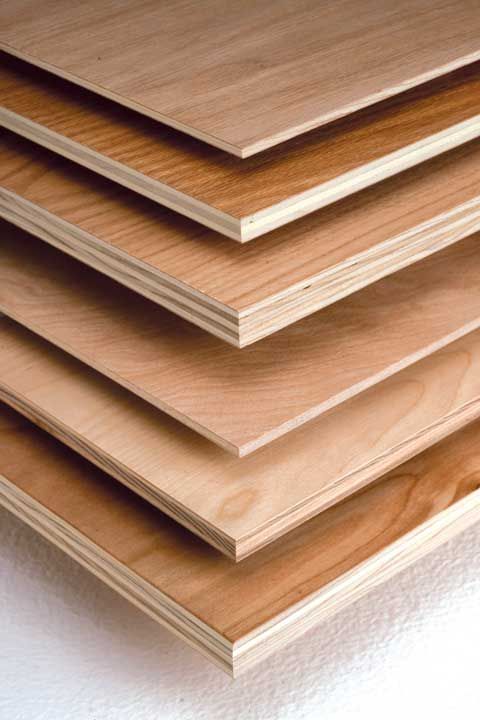
Formaldehyde is one of the most studied chemicals in existence. It occurs naturally. It is contained in human breath. It is ubiquitous and is found at low levels in a myriad of useful and safe consumer products including medications, apparel, wood products and many others. Ingestion of food and water is a significant source of exposure to formaldehyde.
In 1985, the Department of Housing & Urban Development (HUD) issued regulations on composite wood panels used in manufactured housing. Since then, both the U.S. Consumer Products Safety Commission (CPSC) and the U.S. Environmental Protection Administration (EPA) have reviewed composite wood formulations and found no basis to further regulate the formaldehyde content of those products. For years, many Kitchen Cabinet Manufacturers Association (KCMA) members have treated the U.S. OSHA workplace formaldehyde labeling level of 0.1 ppm as a de facto standard for cabinets even though the standard applies only to worker exposure and is lower than the formaldehyde composite wood levels allowed by HUD.
Well, as of today, The KCMA is supporting legislation introduced in the U.S. Senate to adopt the California Air Resources Board (CARB) controls on formaldehyde emissions from particleboard, hardwood plywood, and medium density fiberboard panels as a national standard. Several other industry groups, the Sierra Club, steel workers union, and assorted housing organizations also support the bill. KCMA also supports efforts in Congress calling for the National Academy of Sciences to review the health effects of formaldehyde as they relate to the low levels of formaldehyde such as typically found in domestically manufactured cabinets.
KCMA President Kevin O’Neill, Wellborn Cabinet, Inc., stated that, “Establishing a national standard requiring low-emitting composite wood will be well-received by the cabinet industry. The standards will be the lowest in the world. There now are over 150 certified companies and brands in the program which are listed on the www.GreenCabinetSource.org web site.”
Chime in with your own thoughts below.
Fine Homebuilding Recommended Products
Fine Homebuilding receives a commission for items purchased through links on this site, including Amazon Associates and other affiliate advertising programs.

Affordable IR Camera

Reliable Crimp Connectors
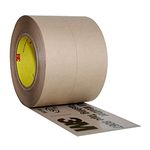
8067 All-Weather Flashing Tape
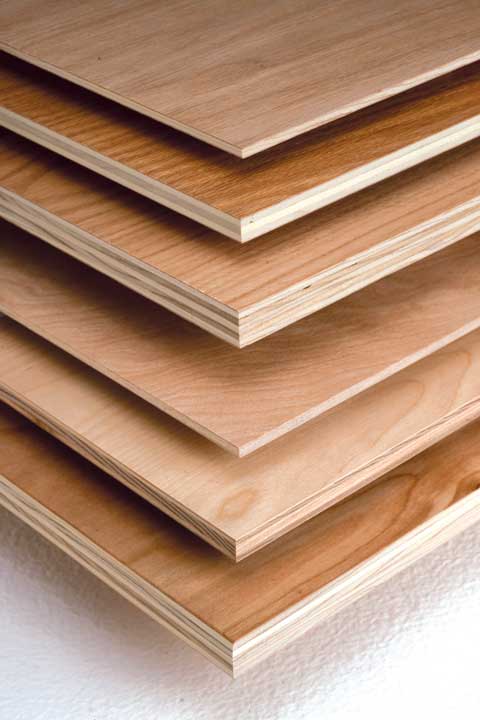






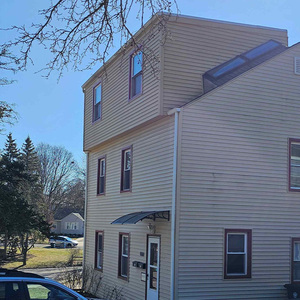














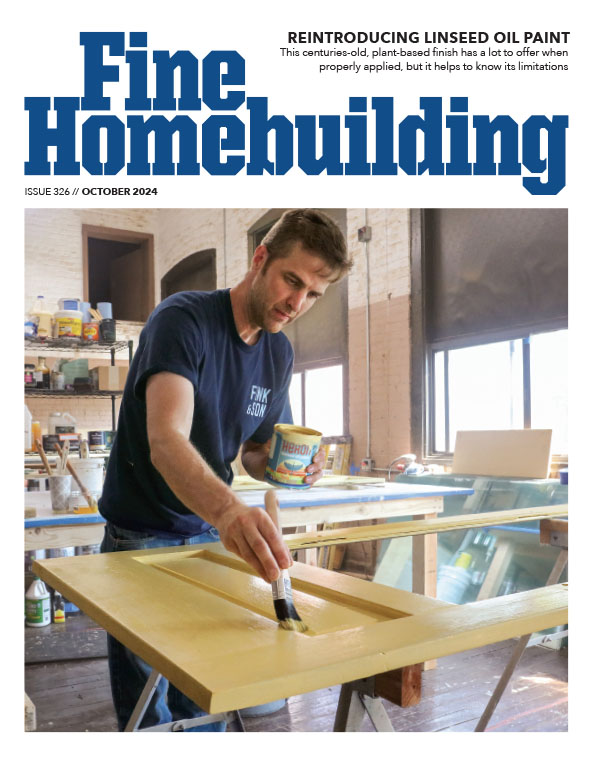





View Comments
This is not an argument against this proposed standard, as much as it is a request for more information.
I weary of continuing 'sky is falling' hype, of which formaldehyde compounds are one target. Yet, this article seems to say that there is no evidence to suggest that the existing standards are too hign, or that there have been injuries that these new standards would avert.
Nor are we informed as to what alternatives there might be, or who is actually using the formaldehyde products. Is this, perhaps, an indirect way to ban imports from competitors of the KCMA? Otherwise, lowereing the amounts of something you do NOT use is no improvement at all!
We might be putting ourselves in a position where the biggest source of formaldehydes in a kitchen might be ... cooking. Will we ban that next?
Finally, what of the alternatives? Do any of them have the 'decades of study' that formaldehyde has? How do we know that the cures are not worse than the disease? After all, we have seen that happen before.
Can you say limiting the amount of finished plywood materials
coming in from China? Follow the money.
Two thoughts on this subject:
1. Let's have the product manufacturers or the chemical industry prove that formaldehyde is not harmful to the end user, rather than the other way around. I believe this standard should apply universally, but that's just me.
2. For the sake of this discussion, let's assume that a workplace chemical is found to be only mildly hazardous to the end user, in this case, you, the carpenter. Now assume that said chemical is one of maybe, a dozen mildly hazardous workplace chemicals that you, the carpenter is exposed to on a regular basis. Is the added and cumulative risk to your health acceptable? What are your limits? Would you knowingly expose your co-workers or family members to the same risks as you might assume for yourself?
Just saying. Before everybody gets all up in arms about the so-called "nanny state".
Just formaldehyde? What about all the other chemicals I'm sensitive to!
If the manufacturers remove formaldehyde in the glue, what kind of plasticizers might they start adding to the glue that are even worse for my chemical sensitivities? Phthalates? Latex?
When working in a brand new office trailer at a job site makes somebody sick it's probably not from just the cabinets and 1/8" plywood paneling outgassing formaldehyde. It's the combination of new vinyl flooring outgassing phthalates, the carpet pad or worse, glue, outgassing latex and solvents. And then somebody comes along and adds a phthalate based air freshener because they think the trailer stinks and that just puts the garnish on a bowl of toxic soup.
Some people are more sensitive to airborne chemicals -- according to my allergist, people with blue eyes just have thinner membranes that react more quickly to irritants just like their eyes are more sensitive to light than people with dark irises. I realize some of you work with these products every day with no bad reaction but that doesn't mean the problems the rest of us have with them aren't real.
If somebody tried they could construct a building of materials with the worst possible legal outgassing and achieve an illegal level of emissions that would bother even the toughest guy. But if they turned on the accompanying high dollar filtered ventilation and energy recovery system they could make make the air healthy again.
Building science is all about the big picture. This regulation can't really be about indoor air quality. JGlav sounds right to me. Still, I think it's good to make the cheapest products as harmless as possible. Like leaving lead out of children's toys -- it's a responsibility. But if they replace the lead with titanium heavily contaminated with uranium did we really get anywhere?
Both the existing and the proposed limits on formaldehyde need to be rigorously imposed not only on domestic sheetgoods (which generally meet all the existing and proposed standards) but also on the increasingly pervasive imported ones (which in most cases do not). I recently used some Chinese made "multiply birch" plywood and the stench of the formaldehyde glue used in its manufacture was very evident. The enforcement of the standards needs to be not only against the local and national suppliers of these products but also against their Chinese manufacturers, if necessary with trade embargos.
I believe formaldehyde in manufactured boards has been banned in the EC for a long time. They use instead casein, a natural product, made from milk. It has been around for a very long time. It's good. Some years back a mosquito fighter bomber was found under one of the inland seas or polders in Holland. It had been under sea water for 60 or 70 years, since going down in the Second World War. Its casein glue joints were stronger than when it was built. These light wooden frame ground support planes had wooden frames,with casein as the glue.
It has no nasty out gassing and is very strong and water resistant. Formaldehyde is not great in comparison to it.
manufacturers like formaldehyde because its a bit cheaper and the manufacturing plants are cheaper to build.
When indoor pollution is worse than outdoor, which is the usual case, why not advocate the elimination of formaldehyde? It wont hurt the manufactrurers in the longer run. If non casein imports are banned, as I think they are in Europe, it could be a big plus. As well they could access export markets which will not accept formaldehyde products.